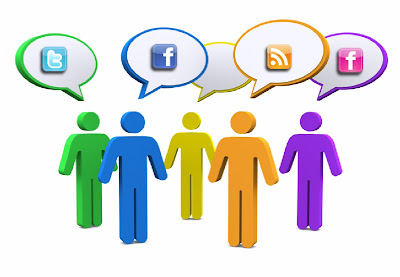Computer History
1st Session
We began again a new week of our ICT class and on the 1st
Session we got to know about the Computer History. We learnt about the
milestones in the history of computer development. We learnt that The early
computer called Abacus used to be used before 1940s. From 1940-1950 it was the
age of 1st Generation. During this time they developed Vacuum Tube. From
1950-64 it was the age of Transistor development also called as the 2nd Generation?
The 3rd Generation used IC (Integrated Circuit). It was from 1964-1974. The 4th
Generation is using VLSI and semiconductor chip; we are living in this
generation. We also got to know the First IBM Computer falls under this
category. What about the 5th Generation? They are considered from present till
the future. We imagine they will develop artificial intelligence and will use
advanced technology in various sectors of human life.

It refers to the concept of hardware and software and the
interconnection between them with the performance and capability of a computer.
We learned computer architecture includes processor, memory, I/O (Input/Output)
system, Control unit and ALU. ALU stands for Arithmetic Logic Unit. We also
learned 1 byte = 8 bits.
We got to know about the categories of computers:
1. Embedded Computers
2. Mobile Devices
3. Personal computers
4. Mid-range Servers
5. Mainframes
6. Supercomputers.
then we had an assignment on the following topic.
Computer Hardware: Motherboard, CPU and Main Memory
2nd Session
System Unit is the 1st topic to talk about. We learnt that
System Unit components are:
1. Processor
2. Memory
3. Expansion Cards
4. Ports and Connectors
Motherboard and Processor
Now What does Motherboard do? It is the main circuit board
in system unit. It contains Chips, ICs and transistors. The Processor is the
main part of the computer. Sometimes it is called as CPU. It processes the data
and controls the computer.
Central Processing Unit
CPU stands for Central Processing Unit. Memory and Processor
are the main parts of CPU. I acts as the brain of the computer. It has two
parts. Control Unit (CU) and Arithmetic Logic Unit (ALU).
Architecture of CPU
It includes Input, Output, Secondary Storage, Memory,
Registers, CU and ALU. Data conversion to Information is one of the main tasks
of CPU.
At first Data is sent through Input devices. Then it sends
the data to Registers and then to CU through ALU it again comes back to
Registers. Then it sends to Memory. the
Memory sends to Output devices. If the user wants to store the data, Memory
sends the data to Secondary Storage.
Main Memory
There are two parts: RAM & ROM
1. RAM (Random
Access Memory)
2. ROM (Read Only Memory)
RAM vs ROM??
Through ROM we can only read data. But to write the data we
need PROM, EPROM, or EEPROM. ROM is non-volatile in nature. RAM is just
opposite. It is volatile indeed and we can write and read data as well.
Computer Hardware: Storage and I/O Devices
3rd Session
1. The milestones of computer development in the history and
about the five generations.
2. Computer architecture includes Processor, Memory, ALU,
Control unit and I/O system.
3. The categories of computers.
4. The architecture of a computer system and the internal
operations led by CPU.




























































